Exploring Hyrule: A Comprehensive Adventure Guide


Intro
Hyrule, the majestic and whimsical kingdom within the acclaimed Zelda universe, has been a source of intrigue for decades. The rich narrative, deep lore, and captivating characters have collectively solidified its status as an iconic setting for adventure. The vast landscape leading up to the royal castle, filled with unique creatures and formidable foes, creates an experience that both enchants and challenges players.
In this article, we will explore various dimensions of Hyrule by focusing on the castle and its significance to the story. We will navigate through key gameplay features, character analyses, and elements of the lore that enhance our understanding of this complex universe. Each section will bring readers closer to the heart of Hyrule, allowing both new players and seasoned fans to delve deep into its intricacies.
Prepare to embark on an adventure that examines what makes Hyrule not just a backdrop for gameplay, but a living, breathing character in its own right.
Prelims to Hyrule
Understanding the realm of Hyrule is crucial for comprehending the broader narrative of the Zelda franchise. Hyrule isn’t just a backdrop; it serves as a character itself, perfectly embodying the themes of adventure, courage, and the perennial struggle between good and evil. Each corner of this kingdom has its distinct identity, rich with history and meaning. For both new players and seasoned enthusiasts, an overview of Hyrule lays the groundwork for deeper exploration into its games and lore.
An Overview of the Kingdom
Hyrule is a fictitious land featured prominently in Nintendo's Legend of Zelda series. It boasts diverse geography ranging from verdant forests to arid deserts, and from soaring mountains to expansive oceans. Each region offers unique challenges and encounters. Central to Hyrule is the iconic castle, often a symbol of hope and unity. The castle not only serves as the dwelling of royalty but also as a nucleus for the narrative's unfolding events.
The kingdom's history is intertwined with several powerful artifacts and entities, most notably the Triforce, a representation of essential virtues. This artifact contributes significantly to the kingdom's lore, influencing its political dynamics and the ambitions of its rulers. With each game iteration, Hyrule expands in scope, introducing new characters, enemies, and narratives that deepen the player's connection to the world.
The Evolution of Hyrule in Zelda Games
Over the decades, Hyrule has undergone significant transformations across various Zelda games. Initially depicted in 1986's The Legend of Zelda, Hyrule presented a simpler, more linear experience. However, each successive title has expanded and enriched its landscape, gradually layering complexity in both gameplay and storytelling.
For example, The Legend of Zelda: Ocarina of Time marked a pivotal moment in this evolution by introducing a 3D world, which allowed for exploration in unprecedented detail. This not only enhanced player immersion but also solidified Hyrule as a deeply engaging environment to traverse.
As new technologies emerged, each installment crafted fresh interpretations of Hyrule. From the cel-shaded aesthetics of The Legend of Zelda: The Wind Waker to the vast, open-world design in The Legend of Zelda: Breath of the Wild, Hyrule remains ever-relevant and appealing. These innovations have kept Hyrule at the forefront of video game architecture, making it a cherished space for storytelling and exploration within the gaming community.
"In every rendition of Hyrule, we see the echoes of its rich past and the potential of its future, solidifying its status as a cornerstone of gaming culture."
Overall, Hyrule is not just a place but a living narrative that continues to captivate audiences, compelling them to journey through its storied lands time and again. The depth of Hyrule’s lore and its evolving aesthetics create a unique blend that keeps the kingdom alive within gamers’ hearts.
The Role of the Castle
The castle in Hyrule serves as a cornerstone of the kingdom's identity and functionality. Its significance extends beyond mere architecture; it embodies the core values and history that define the realm. The castle acts as both a physical and symbolic fortress, standing as a reminder of the kingdom's heritage and the ongoing battle against darkness. Exploring the role of the castle reveals its multifaceted importance in the narrative and gameplay of the Zelda series.
Architectural Significance
The architectural features of Hyrule Castle reflect the artistic styles and cultural influences that permeate throughout the Zelda universe. The castle's design showcases a blend of medieval elements with fantastical aspects. Its towering spires and grand halls create an imposing presence that captures the imagination.
Key architectural features include:
- The Great Hall: A vast area that often receives important visitors and hosts royal gatherings.
- The Throne Room: A symbol of royal authority, where Queen Zelda holds court and makes pivotal decisions.
- Defensive Walls: Thick stone walls and watchtowers reveal the need for protection against external threats.
These structures do not just serve practical purposes; they also play a role in storytelling. Each room tells tales of past victories and defeats, while the corridors hold echoes of significant events that shaped Hyrule.
Historical Context
Understanding the historical context surrounding Hyrule Castle enriches the narrative experience for players. The castle has existed for many centuries, witnessing both the rise and fall of various rulers. Its foundation is steeped in legend, making it a repository of lore that links the past with the present.
The main points of interest in the castle's history include:
- Construction and Foundation: Built during the early days of the Kingdom, the castle was designed as a refuge for the inhabitants of Hyrule.
- Key Historical Events: Numerous battles between good and evil have centered around the castle, marking it as a site of epic confrontations.
- Sorcery and Enchantment: Over time, the castle has been imbued with various magical protections that safeguard it from malevolent forces.
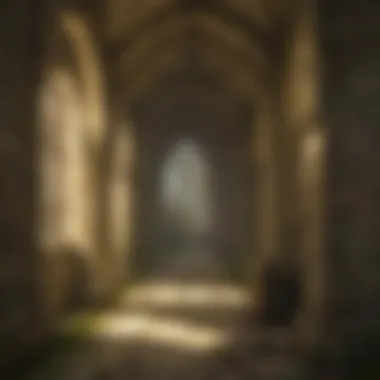
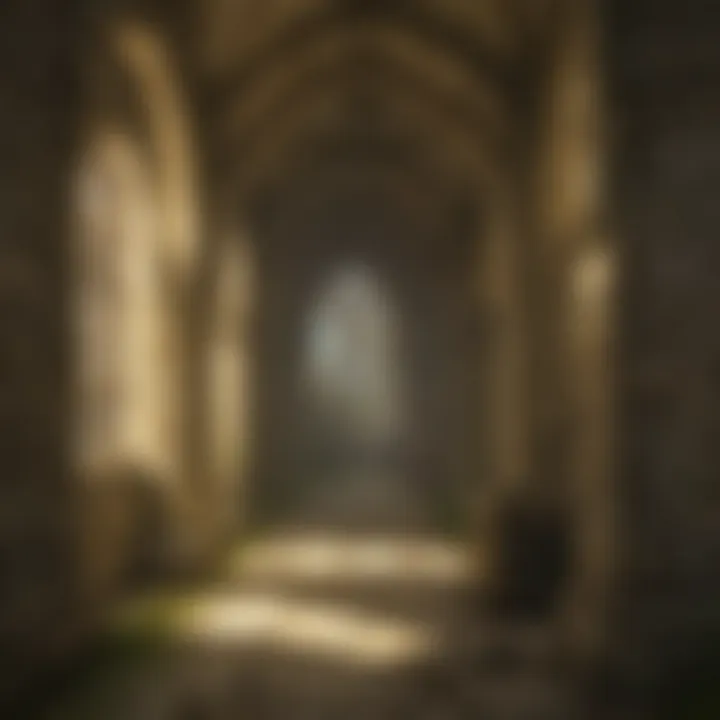
The castle's historical narrative enhances the overall experience of the games by connecting players to the long and intricate history of Hyrule, offering layers of depth to the gameplay experience.
"The significance of Hyrule Castle is not just as a place of power, but as a living part of the Hyrule story itself."
Key Characters of the Kingdom
The characters in the Kingdom of Hyrule provide a significant framework for the narrative seen throughout the Zelda series. Each character embodies unique traits, struggles, and arcs that contribute to a deeper understanding of the mythology. The dynamics between these figures enhance the gameplay experience, highlighting moral dilemmas, heroism, and sacrifice. These characters guide the player through emotional journeys and serve as the foundation of quests and exploration. In essence, they shape Hyrule itself, without which the kingdom would lose much of its depth and engagement.
Link: The Hero
Link, often referred to simply as "the Hero," is the primary protagonist in most Zelda titles. The character is a silent protagonist, which allows players to project themselves into the hero's journey. In his role, Link embodies courage and determination, constantly battling against evil forces, particularly Ganon, to protect Hyrule.
Link’s character can vary depending on the specific game installment. For example, in "The Legend of Zelda: Ocarina of Time," Link transitions from childhood to adulthood, a major aspect that allows character growth and emphasizes his responsibility to save the kingdom.
One notable feature of Link is his connection to the Master Sword, a symbol of power and purity. This sword is intricately tied to the history of Hyrule and serves a crucial role in Link's quests.
- Key Traits of Link:
- Courage: His primary characteristic, helping him face overwhelming odds.
- Perseverance: Despite numerous setbacks, he continues to fight for justice.
- Adaptability: Each game presents a different skill set for Link, showcasing his ability to evolve.
Zelda: The Princess
Princess Zelda serves a dual role as both royalty and a strong character in her own right. Frequently depicted as the bearer of the Triforce of Wisdom, her presence in the series often reflects the balance between power, wisdom, and courage. Unlike the often-overlooked damsel in distress, Zelda possesses her agency, often playing a pivotal role in the outcome of the story.
In some games, such as "The Legend of Zelda: Spirit Tracks," she actively aids Link in combat and strategy, taking on the form of a spirit.
Zelda’s character often showcases the burdens of leadership, emphasizing themes of sacrifice and duty. Her connections with Link serve to create an emotional bonds that push the narrative forward.
- Key Attributes of Zelda:
- Wisdom: Guiding Link through trials and tribulations.
- Compassion: Empathizing with the struggles of her subjects.
- Strength: Aiding Link in both physical and intellectual challenges.
Impa and the Sheikah Tribe
Impa represents the loyalty and wisdom of the Sheikah tribe, an important faction in Hyrule's lore. As Zelda's caretaker and mentor, she plays a crucial role, providing guidance and strategic advice. Impa’s character is often portrayed as a fierce warrior with a deep knowledge of Hyrule's ancient history and combat techniques.
In games where she appears, such as "The Legend of Zelda: Ocarina of Time," she helps Link navigate complex challenges and offers crucial insight into the workings of the kingdom.
- Key Aspects of Impa:
- Loyalty: Unwavering support for Zelda and Hyrule.
- Knowledge: Holds essential information about the past and traditions.
- Combat Skills: Skilled fighter, representing the strength of the Sheikah.
"Each character in Hyrule provides a unique perspective, enriching the story and gameplay experience as a whole."
Adventure Elements
The adventure elements in the Royal Kingdom of Hyrule are vital for creating a rich gameplay experience. They invite players to engage with the environment, connect with the characters, and navigate numerous challenges. This section delves into two specific elements: exploring the castle grounds and understanding dungeon mechanics and layout.
Exploring the Castle Grounds
The castle grounds of Hyrule serve as a significant area in the game's narrative. They are designed to immerse players in the rich history and lore of the kingdom. Walking through the expansive courtyards and lush gardens, players can uncover hidden treasures and clues that enrich their understanding of Hyrule.
As players explore, they encounter various landmarks such as the grand throne room and the iconic gardens. Each area tells part of the story, showcasing the artistry and dedication of the game developers. Notably, certain locations may only be accessible once specific quests are achieved. This design choice encourages players to engage deeply with the game's mechanics and story, fostering a sense of accomplishment.
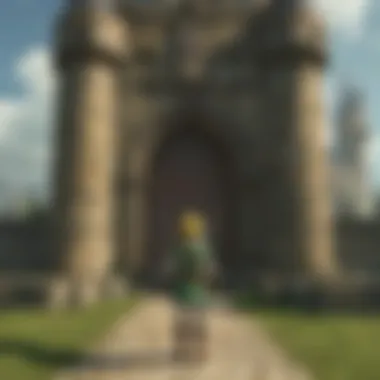
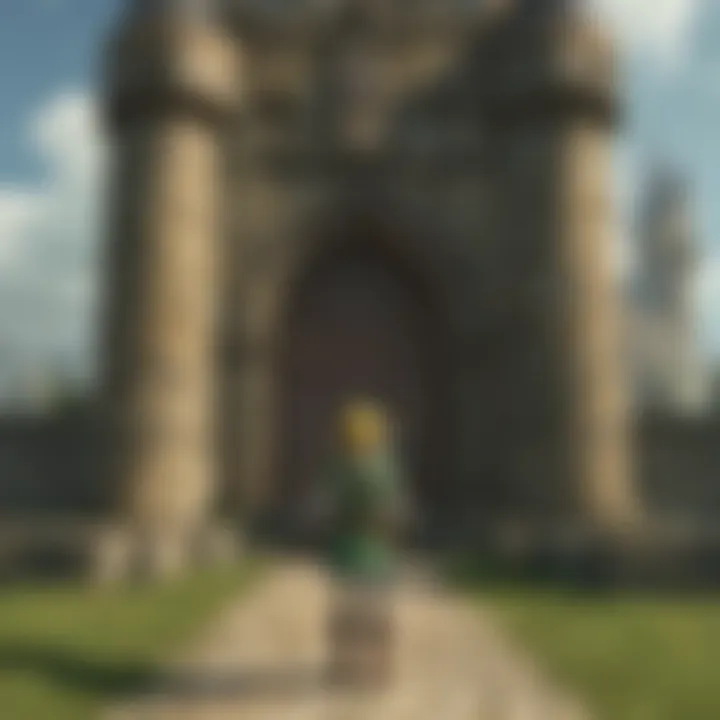
"Exploring the grounds is as much about discovery as it is about the journey itself."
Additionally, the castle grounds host various NPCs that provide insights and side quests. Interacting with these characters enhances the player's experience, as they offer quests that often lead to valuable items or lore. In essence, the castle grounds present a blend of exploration, interaction, and narrative that keeps players invested in their journey through Hyrule.
Dungeon Mechanics and Layout
Dungeons in Hyrule add depth to the adventure elements, as they are critical to gameplay progression and challenge. Each dungeon is uniquely crafted, featuring puzzles, enemies, and obstacles. The layout of these dungeons often requires players to think critically and adapt their strategies as they navigate the challenges presented.
Key aspects of dungeon mechanics include:
- Puzzles: Most dungeons contain intricate puzzles that players must solve. These require attention to detail and often require the use of specific items or abilities acquired throughout the game.
- Enemies: Different dungeons feature various enemies that challenge players. Understanding enemy weaknesses is crucial for survival and progress.
- Treasure Hunts: Throughout each dungeon, there are hidden treasures. Finding these not only aids character progression but also adds an element of excitement to the exploration process.
The combination of these mechanics creates an environment where players constantly learn and adapt. The progression through dungeons is a cornerstone of the gameplay, enhancing player engagement and satisfaction. Understanding the layout and mechanics allows players to better navigate their adventures, ultimately deepening their connection to Hyrule.
In summary, the adventure elements of Hyrule create an enriching experience that is fundamental to the overall journey. From exploring the castle grounds to delving into perilous dungeons, each aspect contributes to the captivating tapestry of this royal kingdom.
Mythology and Lore
The mythology and lore of Hyrule are essential elements that not only provide a backbone for the narrative of the Zelda series but also enhance the emotional connection that fans feel toward the games. The stories, legends, and cultural aspects of Hyrule give context to the adventures of Link and Zelda, inviting players to delve deeper into the meaning behind each quest. Understanding the lore can enrich gameplay experiences, as it adds layers of depth to the characters and setting. By exploring the mythology, players become invested in the ongoing saga, creating a sense of belonging to the Hyrulean world.
The Legend of the Triforce
The Triforce is a central element of Hyrule's mythology. This sacred relic consists of three golden triangles representing Power, Wisdom, and Courage. Each triangle symbolizes a core virtue, critical to the balance of Hyrule. The holder of the Triforce is granted immense power, but with this power comes the responsibility to wield it wisely.
- Power is embodied by Ganondorf, representing the potential for malevolence when one seeks dominion over others.
- Wisdom is attributed to Princess Zelda, who often plays a guiding role in tales of Hyrule, utilizing her intelligence to aid in the fight against evil.
- Courage, of course, belongs to Link, whose adventures define the essence of heroism in the narrative.
Exploring the nuances of the Triforce allows players to appreciate the struggle between these forces. Often, the quest for the Triforce unravels the central conflict in the series, presenting a moral quandary about how power should be used. This continuing interplay among the three attributes invites reflection on real-world issues such as leadership and moral choices.
"The Triforce is not just a symbol; it embodies the essence of what it means to be a hero, a leader, and a scholar."
Hyrulian Tales and Folklore
Hyrulian tales and folklore craft a rich narrative tapestry that contributes to Hyrule's allure. From ancient legends of the Hero of Time to the modern tales spoken among the inhabitants of the land, these stories showcase the diverse experiences of its people. Such lore often serves as quests or side missions within the games, encouraging exploration and engagement with the world.
These narratives contribute significantly to world-building, offering insights into the culture, traditions, and struggles of Hyrulean society. Players encounter various themes—tragedy, triumph, love, and sacrifice.
Some notable examples include:
- The Song of Healing — A poignant tale about moving forward from loss, frequently used in gameplay to provide solace.
- The Hero’s Shade — The spirit of a fallen hero, encapsulating the themes of legacy and remembrance.
Studying these tales enriches the understanding of characters and their motivations, making the gaming experience more immersive. Players not only engage with the world of Hyrule but also become part of its ongoing story,
Gameplay Strategies
Gameplay strategies are essential for anyone seeking to navigate the intricate and layered design of Hyrule. Mastering these strategies allows players to not only progress through the game but also to enrich their overall experience. Effective gameplay strategies enhance problem-solving skills and critical thinking, which are important elements in the ever-changing world of Zelda.
One key aspect of gameplay strategies involves understanding the mechanics of the game. Players should familiarize themselves with the abilities of Link, the primary character, as well as the items he can acquire throughout his journey. The variety of weapons, shields, and tools at Link's disposal allows for diverse approaches to challenges. This knowledge helps in planning ahead, ensuring that the player can adapt to various situations as they arise.
Consider the importance of using stealth and speed in confronting the numerous foes within Hyrule. Timely navigation through enemy territory while remaining undetected can drastically reduce health losses and resources consumed. By taking advantage of the environment, players can avoid direct confrontations when necessary or prepare for strategic attacks.
"A well-prepared hero is a successful hero. Understanding the game mechanics accounts for every victory and lesson in Hyrule."
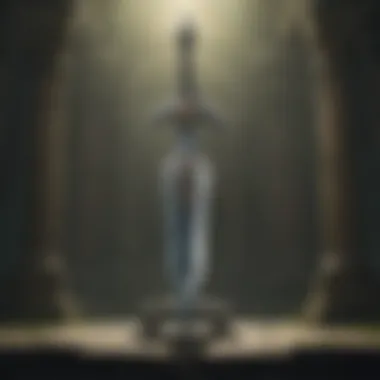
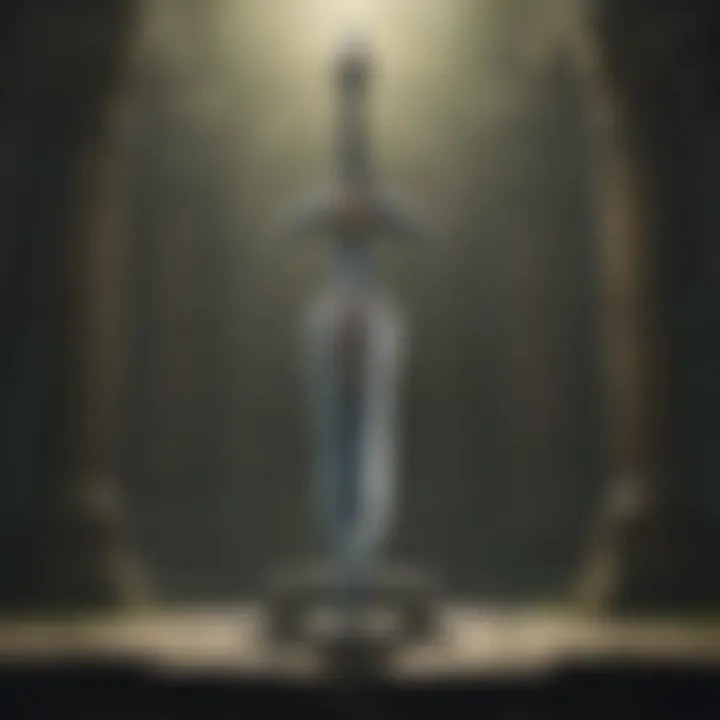
Navigating Challenges
Navigating challenges is one of the core gameplay skills necessary for conquering various trials scattered throughout Hyrule. Each area presents unique obstacles that require keen observation and strategic planning. Recognition of patterns, whether in enemy behavior or environmental traps, is critical.
Effective navigation often requires examining the surroundings for clues and aids. Link can traverse complex terrains by utilizing different tools. The hookshot, for instance, allows players to cross gaps and reach elevated areas.
- Pay attention to NPCs: Non-playable characters often provide tips or expand the lore that can help in overcoming challenges.
- Environmental awareness: Identifying hazards, such as pits or aggressive wildlife, enables players to anticipate and sidestep potential damage.
Additionally, puzzles are abundant in dungeons, requiring cognitive skills to solve. This demands players to engage in critical thinking, testing their ingenuity and patience.
Combat Tips for Battle
Combat is a major feature of gameplay in Hyrule, requiring not just reflexes, but also strategy. Understanding the nuances of combat can significantly improve a player’s chances during encounters. Each enemy type demands a different approach, from quick reflexes to calculated attacks.
To excel in combat:
- Learn enemy patterns: Each foe has specific attack sequences that can be exploited. Learning these can provide a significant advantage, allowing players to counter or evade effectively.
- Use diverse weapons: Understanding the strengths and weaknesses of different weapons, such as swords, bows, and bombs, plays critical role in overcoming various adversaries.
- Upgrade gear: Regularly upgrading equipment can enhance capabilities. Seeking out hidden items, like heart pieces, can also result in more health during conflicts.
Defensive skills are equally important. Timing with shields can deflect attacks, creating openings for counter-attacks. Additionally, special items like elixirs and potions can provide critical boosts, especially in challenging encounters against formidable bosses.
In summary, mastering gameplay strategies, effectively navigating challenges, and fine-tuning combat skills are crucial components of enjoying and succeeding in the world of Hyrule. Engaging with these strategies elevates the gaming experience, allowing players to immerse themselves deeper into the expansive lore and challenges of this iconic realm.
Cultural Impact
The cultural significance of Hyrule extends far beyond its virtual borders. The kingdom has become a symbol of adventure, heroism, and a complex narrative woven into the fabric of gaming history. Its impact resonates within popular culture and has fostered a community that thrives on discussion and exploration of its lore, characters, and gameplay.
Hyrule in Popular Media
Hyrule has permeated various forms of media over the years. It has inspired not only video games but also comics, animated series, and merchandise. Each medium offers a different lens through which fans can engage with the story of Hyrule, amplifying its reach across generations.
In particular, the animated series from the late 1980s showcases how mainstream media adopted aspects of Hyrule, even though it did not closely follow the game's narrative. This interpretation made the characters accessible to a broader audience, especially to those unfamiliar with the gameplay mechanics of the series.
Moreover, references to Hyrule can be found within a plethora of pop culture phenomena. From memes and fan art to discussions on platforms like Reddit, the kingdom remains a constant source of inspiration. It is not uncommon to see elements from Hyrule interwoven into other media, reflecting its influence and acceptance in various artistic expressions.
Fan Theories and Discussions
Fan engagement is a major component of Hyrule's cultural impact. The community thrives on theories and discussions that enrich the overall understanding of the kingdom. Forums, social media, and dedicated gaming sites allow enthusiasts to analyze each game's plot and characters in depth. Topics range from timeline theories to character motivations, revealing the complexity of Hyrule's lore.
One well-known fan theory suggests that the Zelda timeline is not linear but rather cyclical, with the rise and fall of kingdoms occurring repeatedly. This notion invites players to ponder the implications of their actions and the ongoing nature of Hyrule's struggles. The diversity of theories encourages critical thinking and deepens the players’ connection to the story.
Engaging in these discussions not only enhances the gaming experience but also fosters a sense of community among players. Fans share insights and perspectives, allowing for a richer interpretation of the entire Zelda universe. The intricate lore of Hyrule continues to inspire debate, making it an enduring aspect of gaming culture.
Hyrule is not just a setting but a living entity that expands with each new installment and every discussion that takes place between fans.
The End
The conversation surrounding Hyrule extends beyond gameplay and character dynamics. It encompasses the very essence of the kingdom's evolution, the role of the castle, and the narrative threads that bind them. The examination in this article reveals critical layers to Hyrule’s landscape, illustrating its enduring appeal in the gaming community.
The Future of Hyrule
Looking ahead, the future of Hyrule promises a blend of nostalgia and innovation. With ongoing developments in the Zelda franchise, fans eagerly anticipate how new technology will shape the gameplay experience. Upcoming titles reveal a desire to expand the lore further, potentially introducing new characters and unexplored regions within Hyrule. Speculations about a deeper integration of multiplayer elements also stir excitement. Adaptability remains key in preserving Hyrule's allure for veteran players while attracting a new generation. Essential dialogues about this shift will continue to engage enthusiasts in forums and social media discussions.
Final Thoughts on the Kingdom
Reflecting on Hyrule brings a sense of appreciation for its intricately woven history and character developments. As players traverse its terrains and engage with its inhabitants, they find not merely a world to explore but a tapestry of stories waiting to unfold. Hyrule continually reinvents itself, keeping its essence intact while evolving with each iteration. This dynamic nature ensures that the kingdom remains vibrant and relevant. The dialogue between past and future in Hyrule creates a compelling narrative, inviting players to participate in its ongoing story.
"In the heart of every adventurer lies the spirit of Hyrule's endless quest."
By understanding the spiritual and historical significance of this realm, enthusiasts can appreciate the kingdom’s depth. Hyrule stands not just as a setting but as a symbol of adventure, rich tradition, and an ever-evolving tale.







